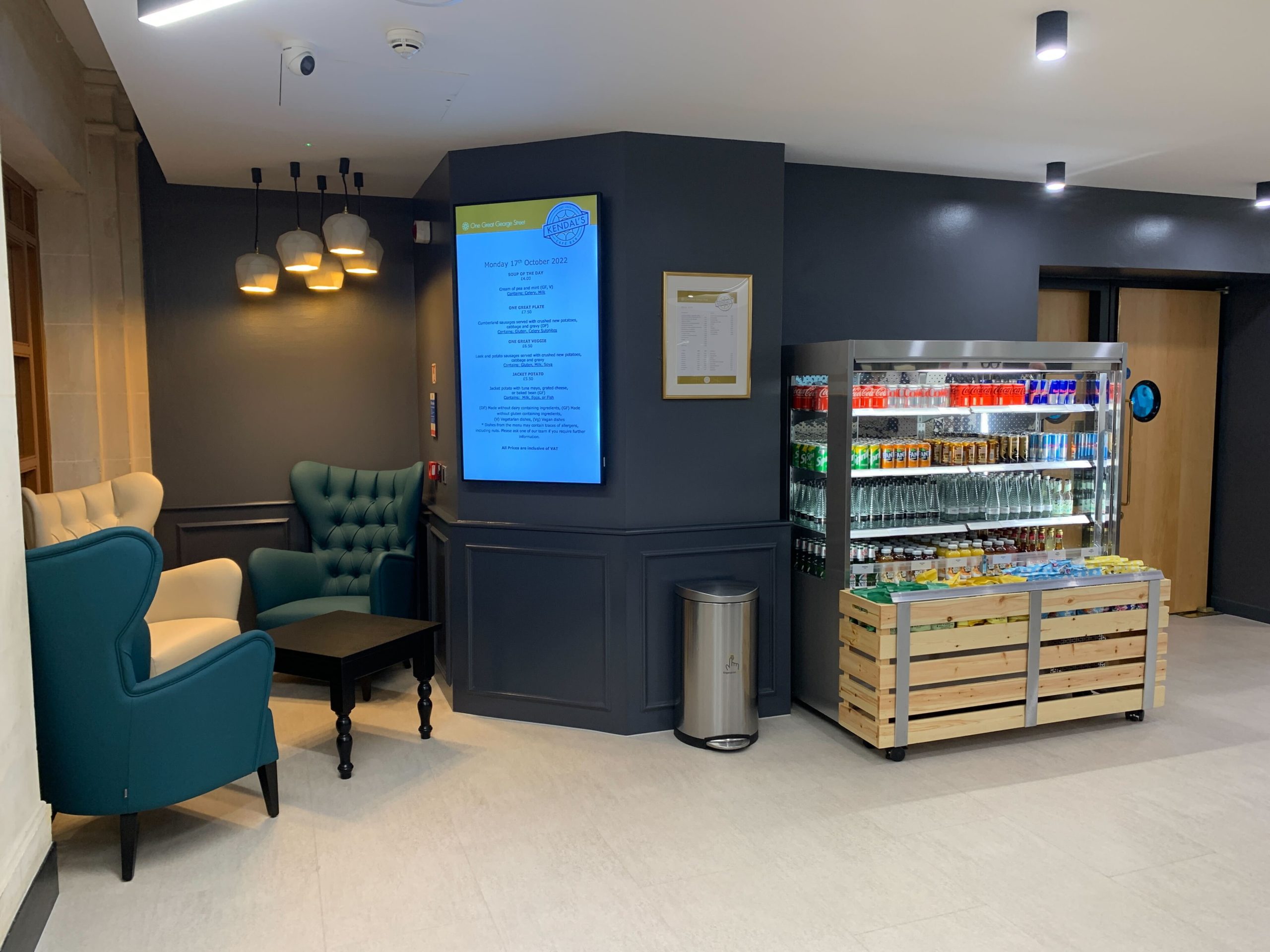Understanding AV over IP: Revolutionising Audio-Visual Distribution
- Runtech Group Limited
- 5 mins read
Share article
In recent years, the convergence of audio-visual (AV) technology and networking has sparked a transformative revolution in the form of AV over IP (Audio-Visual over Internet Protocol).
This paradigm shift is reshaping how AV content is distributed, managed, and consumed across various environments, from corporate offices and educational institutions to large-scale entertainment venues. This blog delves into AV over IP, its benefits, and some of the leading solutions in the market, such as Netgear’s AV Line Switches, which have been designed explicitly for AVoverIP. Then, there are the manufacturers who have developed encoders and detectors. Popular options include Blustream, ZeeVee, Crestron, AMX and many more. Some new players have been coming into the market, such as Netvio.
What is AV over IP?
AV over IP refers to the transmission of audio, video, and control signals over a standard IP network, as opposed to traditional point-to-point connections using HDMI, DVI, or DisplayPort, as well as individual control and audio cables. This efficient system, leveraging the flexibility and scalability of IP networks, allows for a more versatile and efficient distribution of high-quality AV content, empowering you to manage your resources more effectively and take control of your AV distribution.
Key Components of AV over IP
- Encoders: These are devices that convert audio and video signals into a format that can be transmitted over an IP network. In simpler terms, you can think of them as the ‘INPUT’ devices that prepare the audio and video for transmission.
- Decoders: Convert IP packets back into audio and video signals. In some way, you can consider this as the “OUTPUT.”
- Network Switches: Direct the IP packets to their correct destinations.
- Control Systems: Manage and route the AV signals across the network.
Benefits of AV over IP
- Scalability: Easily expand the system by adding more encoders and decoders. (Inputs and Outputs)
- Flexibility: With AV over IP, you are not limited by physical connections. You can distribute AV content to any endpoint within the network, giving you the freedom to adapt your AV solutions to your specific needs and environments. This flexibility empowers you to take control of your AV distribution, making it more efficient and versatile.
- Cost-Efficiency: AV over IP utilises existing network infrastructure, reducing the need for dedicated AV cabling. This not only saves you money on additional cabling but also ensures a more efficient use of your resources. It’s a cost-effective solution that reassures you about your investment in AV technology.
- Quality: Support for high-definition and ultra-high-definition video formats, as well as multi-channel audio.
- Integration: Seamlessly integrate with other network-based services and systems. It also requires less rack space compared to standard large-format Matrix Switchers.
One leading example of AV over IP is Netgear’s AV Line of managed network switches. These switches are optimised to handle AV traffic’s high bandwidth and low latency requirements. Key features include:
- IGMP (Internet Group Management Protocol) Snooping: Efficiently manage multicast traffic, essential for distributing video streams.
- Quality of Service (QoS): Priorities’ AV traffic to ensure smooth, uninterrupted playback.
- Web-Based Interface: Simplifies setup and management of AV networks.
- Robust Design: The high port count and PoE (Power over Ethernet) support allow devices to be powered directly through the network cable.
Netgear’s AV Line switches are highly regarded for their reliability and performance, making them popular in professional AV installations. However, there are many other solutions on the market, and it is worth discussing the pros and cons of each before settling on one brand.
What are the potential challenges or limitations associated with implementing AV over IP solutions?
Implementing AV over IP (Audio-Visual over Internet Protocol) solutions presents several challenges and limitations. These include issues with bandwidth and latency, as well as potential security breaches if the AV network is not properly segmented from other business-critical networks.
Overcoming these challenges is crucial to ensure the successful implementation of AV over IP. Integrating AV over IP with existing legacy AV equipment can be challenging due to differences in protocols, formats, and connectivity options, but we have the experience to overcome any of these.
The AV industry lacks universal standards for AV over IP, leading to compatibility issues between equipment from different manufacturers. This is why we choose carefully our partners; our focus is on the quality of the support given to us and our customers over the years.
It is important to note that there are two types of AV over IP formats: 1GB and 10GB. Basically, 1GB is compressed, and 10GB is uncompressed. Both are 4K 4:4:4, but the main difference is that the JPEG2000 format in the 10GB is uncompressed; what does this mean? It means that basically, the HDMI in its full length is 18GB, which cannot run through 1GB without being compressed – When looking at a screen, the main difference between the two bandwidths is that it will look the same, but when things are very fast moving with 1Gb you can see ghosting etc. So it is important to consider what the AV over IP system is being used for when making the decision of compressed or uncompressed.
How do AV costs over IP solutions compare to traditional AV distribution methods?
It is probably accurate to state that the costs can be similar in terms of hardware. Looking at an 8 x 8 matrix by a reputable manufacturer, you would be looking at approximately £5.000 ex VAT. However, you would then need to add HDMI cabling, and in some cases, the cabling would need to be extended by HDMI over CAT6 extenders, so the cost would then add up to £600 per endpoint (Mitigated by using HDBase T matrices). Let’s say half the endpoints are extended; you are looking at approx—£7.500 minimum.
For an 8 x 8 Video over IP solution, eight encoders, eight Decoders, and one switch would simplify the cost—approximately £8,000 ex VAT for a reputable manufacturer.
Ultimately, the initial costs are the same. It depends on the size of the system. As you increase the size to 12 x 8 or 24 x 24, the cost of non-AV over IP matrices becomes prohibitive, yet with the AV over IP option, the switch price stays the same. You are simply adding extra encoders or decoders to the existing network.
Examples of how we have used AVoverIP in recent projects
Hospitality Client
We were approached by a restaurant chain to install a multi-input to multi-output solution for their basement restaurant. We opted for the ZeeVee AVoverIP, and the project went smoothly. The ZeeVee Encoders and Decoders are 1G, and we utilized Netgear AV Line switches. The switching was managed through Kramer Control solutions. The sources consisted of live TV and Apple TV, alongside an encoded laptop input for event days. Read the full case study here:

Corporate Client
Runtech was commissioned to design, supply, and install an AV over IP solution for a software company’s AI center. For this project, Blustream 350 Encoders and Decoders were chosen, offering 1GB 4K 4:4:4 video quality. These were combined with the Netgear AV Line switch. The system was controlled via Kramer. The project was interesting due to the diverse array of screens installed in various configurations with multiple input types, including conferencing and wireless presentation pods by Mersive. The AI Center was built to allow the software company to showcase their solutions to their customers.

Conclusion
It has been noticed that our projects more frequently include AV over IP. If not, the AV extension is almost always over CAT6. This means that we are extending the reach of our AV systems using CAT6 cables, a common practice in the industry. We are installing more AV over IP solutions than standard solutions, and the results are positive. The PoE Encoders and Decoders option simplifies the installation and, once again, lessens the cost. From Runtech’s point of view, AV over IP is the way forward, and the manufacturers are producing excellent products to support the industry.
Diego Molinaro CTS
Technical Services Manager
Contact our team if you’re interested in learning more about how technology can enhance your workplace.
Related articles

Creating Privacy and Comfort Through Sound Masking
Our Recommended Solution: Sound Masking After careful evaluation, we recommended sound masking as the most effective and non intrusive

Avoiding Common AV Pitfalls: Runtech’s Client-Centric Approach to Reliable Solutions
Audio-visual technology should enhance your spaces, streamline your operations, and support your teams. Yet many organisations find that their

Martyn’s Law and Accessible Emergency Communication: Why Hearing Loops Matter More Than Ever
As the UK prepares to introduce Martyn’s Law (also known as the Protect Duty), public venues face new obligations
Subscribe to our mailings
Stay up to date with the latest trends and news from Runtech.
